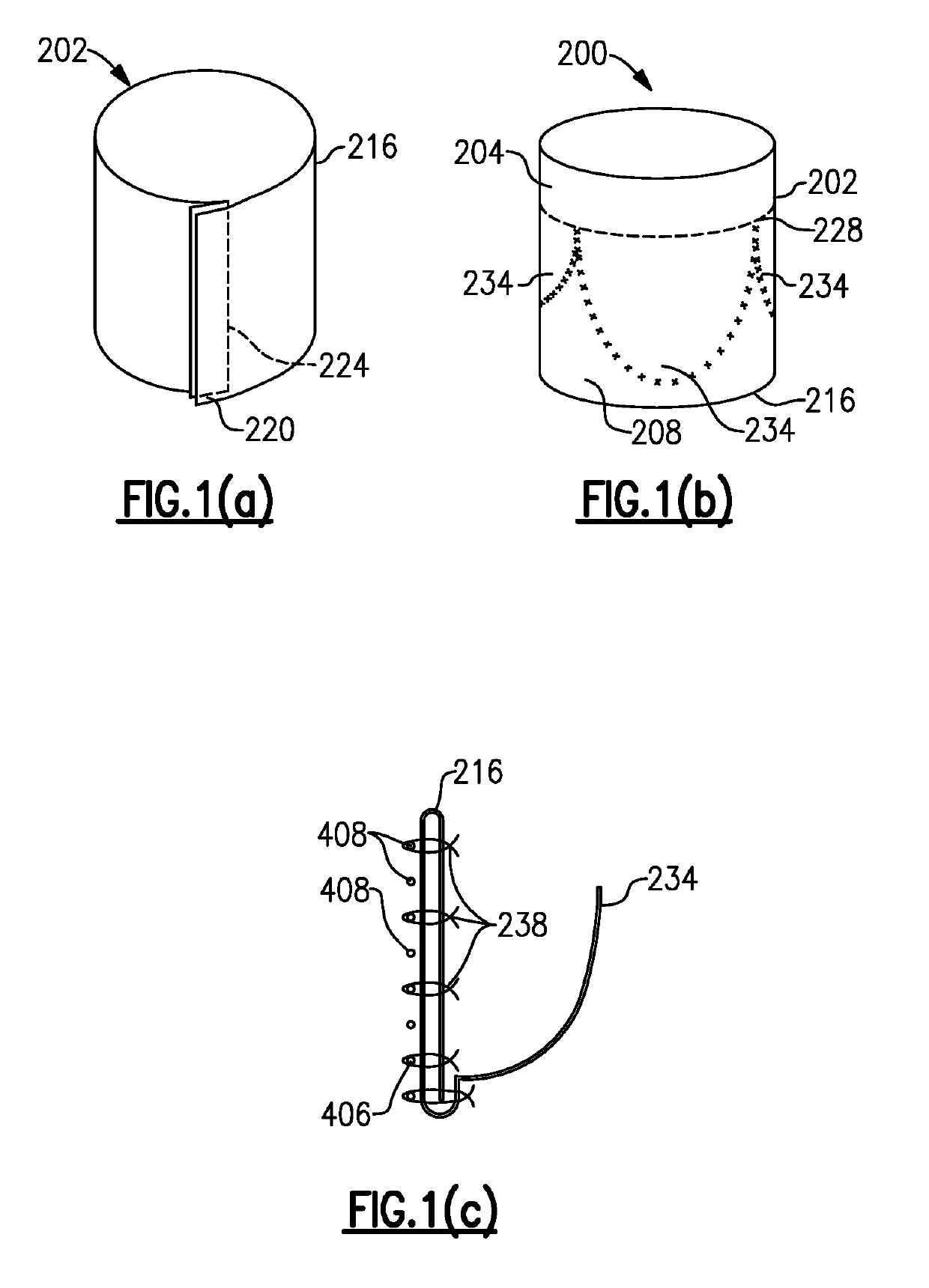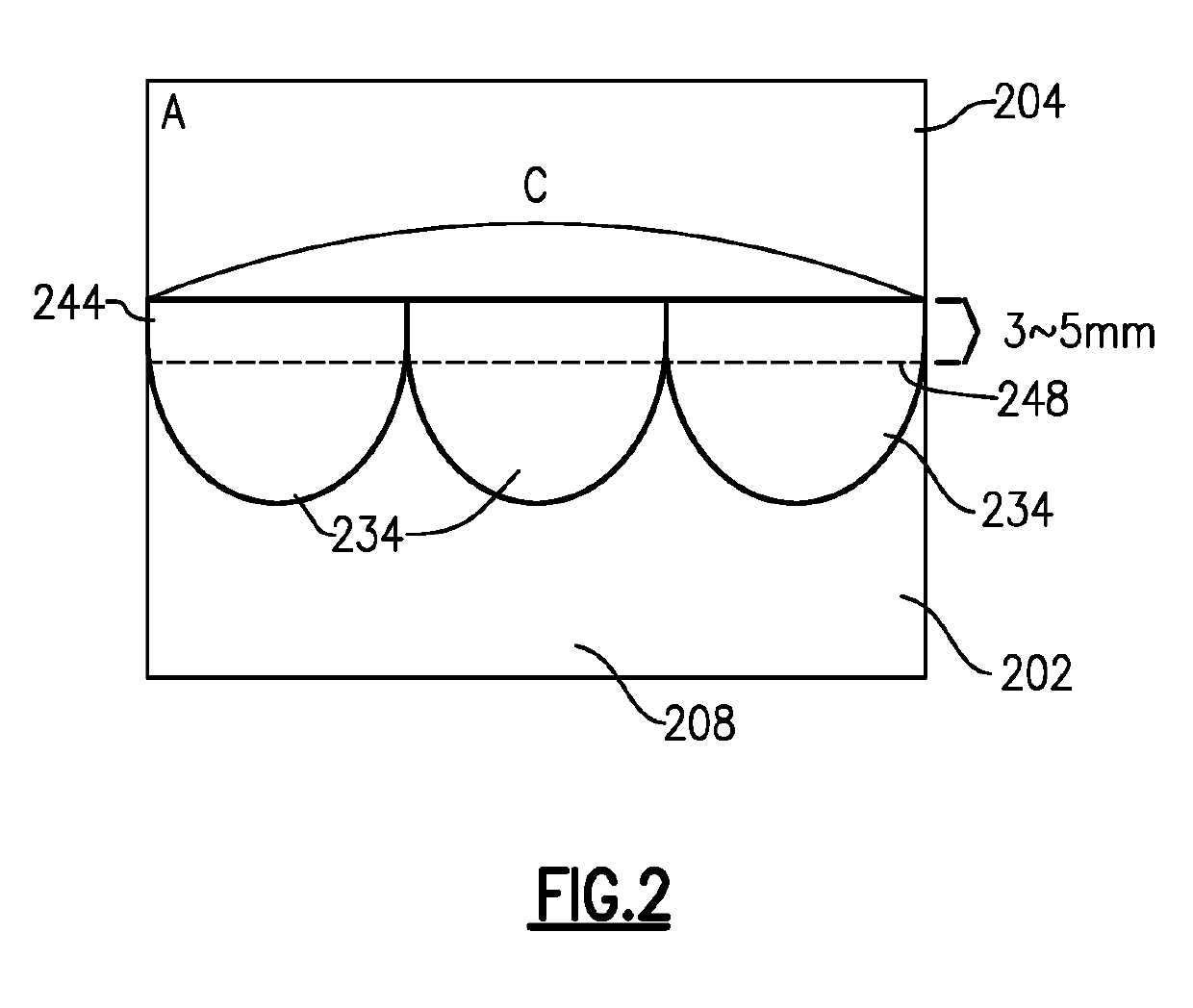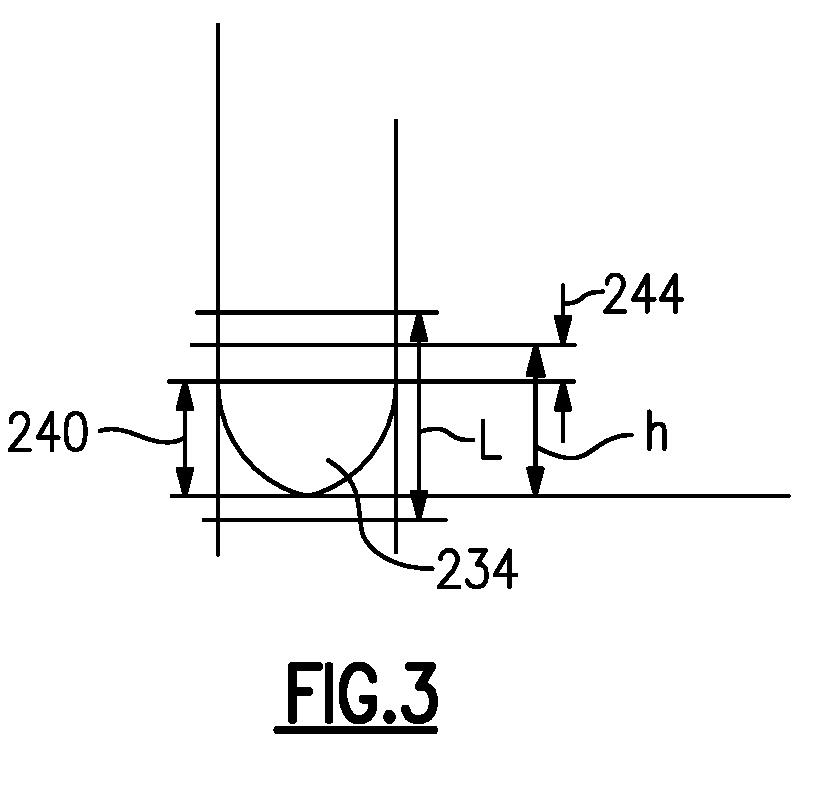Transcatheter valve
- Summary
- Abstract
- Description
- Claims
- Application Information
AI Technical Summary
Benefits of technology
Problems solved by technology
Method used
Image
Examples
Embodiment Construction
[0023]The following description relates to the manufacture of a heart valve (such as a pulmonary valve), fabricated from a graft formed from a specific synthetic biocompatible material, namely expanded polytetrafluoroethylene (ePTFE) in accordance with various embodiments. According to one embodiment, the graft is formed from a multi-layered sheet and according to another embodiment the graft is made from a cylinder made from the synthetic biocompatible material. As described herein, the heart valve is a tri-leaflet valve having a plurality (three) of semicircular leaflets, in which the formed graft or sleeve of the valve and the leaflets are sutured to a flexible stent for implementation to a patient site using a balloon catheter. It will be readily understood that there can be other variations and modifications of the herein described valve design herein intended to be within the ambits of the invention.
[0024]First, and with reference to FIGS. 1(a) and 1(b), the formation of a val...
PUM
| Property | Measurement | Unit |
|---|---|---|
| Thickness | aaaaa | aaaaa |
| Flexibility | aaaaa | aaaaa |
| Biocompatibility | aaaaa | aaaaa |
Abstract
Description
Claims
Application Information
 Login to View More
Login to View More - R&D
- Intellectual Property
- Life Sciences
- Materials
- Tech Scout
- Unparalleled Data Quality
- Higher Quality Content
- 60% Fewer Hallucinations
Browse by: Latest US Patents, China's latest patents, Technical Efficacy Thesaurus, Application Domain, Technology Topic, Popular Technical Reports.
© 2025 PatSnap. All rights reserved.Legal|Privacy policy|Modern Slavery Act Transparency Statement|Sitemap|About US| Contact US: help@patsnap.com



